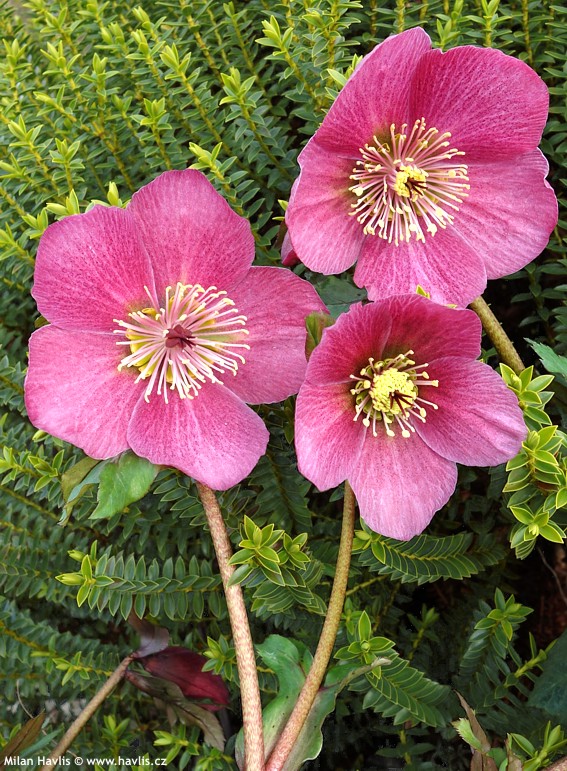Helleborus HGC® 'Lem 100' MADAME LEMONNIER hellebore, Lenten rose
Helleborus
Hellebore (Lenten rose) is not a new plant to Czech and Slovak gardens. I remember those flowering stems that surprisingly pushed through the snow in late winter and I kept asking grandma how come that a plant can flower while there is still snow on the ground. These evergreen perennials are still very popular, mainly thanks to newly hybridized varieties with fantastic flowers. German nursery Heuger has been breeding Lenten roses since 1950’s. No wonder they are considered to be the top producers of these beautiful plants in Europe. Their Helleborus Gold Collection® (HGC) is a trade mark for the best inventions in the field of hybrid hellebores.
MADAME LEMONNIER® is truly a fantastic hellebore variety bred by an enthusiastic breeder from northern France Martine Lemonnier in 1995, and patented as PP25646 ‘Lem 100’ in 2013. Flowers are huge – up to 10 cm across, open wide, pastel purple pink, decorated with numerous yellow stamens and a crown of tiny yellow-green funnels around them, and deep burgundy red stigma in the centre. They are atop strong, about 20 cm tall stems, facing its admirers (not nodding), and come out from mid to late December in warm winters, but more commonly from late February or early March in normal winters of zones 5 and 6, and bloom until April if there is no significant frost that could damage the flower buds. Palmate leaves are evergreen, leathery, and very dark green. It is recommended to remove all old foliage in spring to encourage growth of new leaves.
Hellebore likes heavy, evenly moist, and neutral to alkaline, rich in humus soil in dappled shade or filtered sun. This hybrid will prefer at least half a day with direct sunlight. Fertilizing will increase flowering and help the leaves remain strong and nice throughout the winter. Grow it somewhere near your house entrance or close to the window you look out of frequently so that you can enjoy the plant when it starts flowering since at that time the weather outside is not yet ideal for walking around the garden. The flowers can cheer up a number of grey and dull days of late winter therefore thumbs up for hellebore! Harmful if eaten. Hardy to about -27°C (USDA zone 5).
Last update 04-03-2017










































